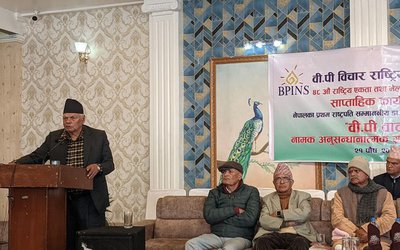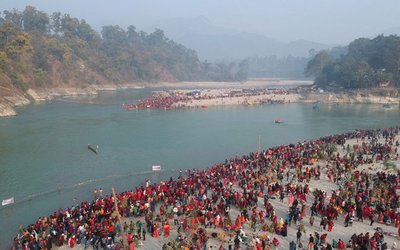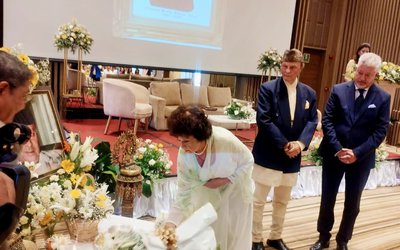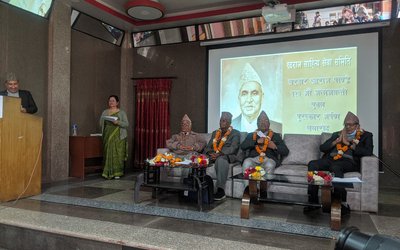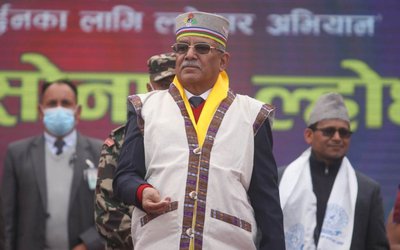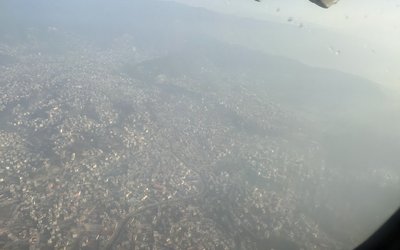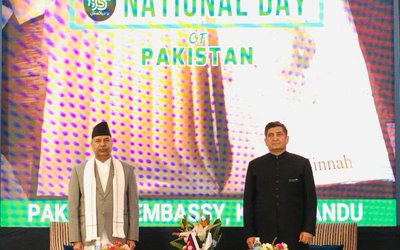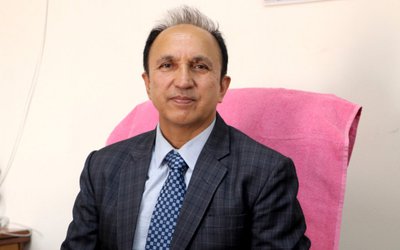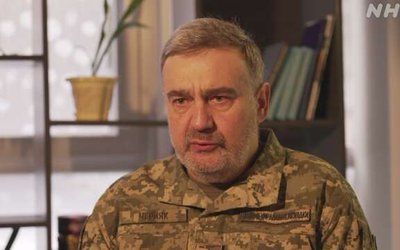

A Picture of Mulkaji Damodar Pande
By A Blogger
Introduction
Kaji Damodar Pande was a Nepalese Statesman, military General and a nobleman who served as the Mulkaji/Mukhya Mantri (equivalent to the Prime Minister) of Nepal. He was born in 1752 A.D or 1808 B.S as the youngest son of Kaji Kalu Pande. He along with his elder brothers Kaji Bansharaj Pande and Sardar Ranasur Pande, were given important roles in the court of King Prithvi Narayan Shah soon after the death of their father in the battle of Kirtipur. Damodar Pande was a very successful general who fought in the Sino-Nepalese war, Nepal-Tibet war and the unification of campaign of Nepal. He successfully annexed Sikkim in the East to Krishna-Gandaki upto Mahakali in the west.
Unification Campaign
Damodar Pande was made the Army General or the Pradhan Senapati of the Gorkhali forces in 1786 A.D during the Regency of Prince Bahadur Shah. He along with his fellow commanders Kaji Abhiman Singh Basnet, Kaji Jagajit Pande (son of Kaji Tularam Pande), Sardar Amarsingh Thapa and Sardar Prabal Rana were successful in annexing Parbat, Dang, Rolpa, Gulmi, Argha, Khachi, Jumla, Achham, Bajhang, Doti , Dullu and ultimately extending Nepalese border upto Mahakali river in 1790 A.D (1847 B.S). He also played a great role in extending the eastern border of Nepal up to Sikkim.
Sino-Nepalese war and the Treaty of Betrawati
Sino-Nepalese war was fought during 1788-1792 A.D initially between the Nepalese forces and the Tibetans Tamangs and later with the Qing dynasty of the China after Tibet requested Chinese intervention in the war. Kaji Damodar Pande successfully attacked Tibet in 1788 A.D and later led various attacks in the Kuti and Kerung axis under his command. Later King Rana Bahadur Shah issued a royal order in the name of Kaji Damodar Pande in September 1792 A.D, delegating him the authority to sign the Treaty of Betrawati as the senior most Kaji. The Treaty of Betrawati was signed between the Chinese Emperor Qialong to maintain peace and avoid further hostilities between China and Nepal.
Influential figure in Nepal

A portrait of Mulkaji and Senapati Damodar Pande
After the coming of age of King Rana Bahadur Shah in 1794 A.D, he removed his uncle Prince Bahadur Shah from power and appointed 4 Kaji’s as the new council. Even though Kaji Kirtiman Singh Basnet was made the Mulkaji (Chief Kaji), Damodar Pande was the most influential among the four Kaji’s. He was also the Mama (Maternal Unlce) of Kaji Kirtiman Singh Basnet. Damodar Pande was given the role to look after the foreign affairs as he was a well-known figure among the neighboring states during that period.
Dual-Administration and Conflict with the King
After the death of his third Queen Kantavati, King Rana Bahadur had been showing irrational behavior and making it hard for other courtiers to run the day to day administration of the country. Owing to this behavior of King, he was forced to resign and pass on his throne to his one and half year old son Girwan Yuddha Shah in 1799 A.D. Damodar Pande, and other courtiers moved the new baby king to Nuwakot and started to run the administration of the country form there in the name of the baby king while former King Rana Bahadur Shah still tried to run the administration from Kathmandu. This led to a period of dual-administration in Nepal at the same time which led to the conflict between the former King Rana Bahadur and Kaji Damodar Pande.
As Kaji Damodar Pande exerted more influence in Nepal, during that period of time, the former King was compelled to flee for Benaras at the end of 1799 A.D along with his supporters like Bhimsen Thapa and Dalbhanjan Pande. This left Damodar Pande as the most influential courtier in Nepal with complete control over the administration and the power to conduct foreign affairs.
Decline from Power
Damodar Pande had effectively been in power since 1794 A.D in various capacities as the senior most Kaji. He wanted to peacefully run the administration in the name of infant King Girwan Yuddha and keep the former King Rana Bahadur outside of Nepal. He was appointed as the Mukhya-Mantri or Mulkaji of Nepal in 1803 A.D by Senior Queen Rajrajeswori. Mulkaji was a post equivalent to the later post of Mukhtiyar and Pradha Mantri.
Mulkaji Damodar Pande was in constant conflict with then British Resident to Nepal Captain William Knox regarding the payment of pension and other living expense of the former King Rana Bahadur Shah in Benaras. The arrangement of the payment of pension to the former King in exile was done through the treaty of commerce of 1801 A.D. Captain Knox was trying to interfere in the internal affairs of Nepal, of which Kaji Damodar Pande was the biggest obstacle. Captain Knox voluntarily left Kathmandu in 1803 A.D and then Governor General of India Richard Wellesley unilaterally annulled the treaty of commerce. The annulment of the treaty prompted the return of former King Rana Bahadur Shah in Nepal in 1804 A.D. After the return of Rana Bahadur, Kaji Damodar Pande and his supporters were arrested from Thankot in March 1804 A.D or Chaitra of 1860 B.S.
Execution
Kaji Damodar Pande was beheaded along with his two innocent sons Kaji Rana Keshar Pande and Gaja Keshar Pande on the orders of Rana Bahadur Shah. Damodar’s other sons namely Rana Jung Pande (later Mukhtiyar), Ranadal Pande, Karbir Pande fled to Bettiah fearing execution. During the time of execution, Damodar Pande was 52 years old and his sons were in their 20’s.
Legacy

A portrait of Mukhtiyar Kaji Rana Jung Pande (a son of Kaji Damodar Pande)
Damodar Pande along with Bhimsen Thapa, Rana Jung Pande, Mathbar Singh Thapa and Junga Bahadur Rana have been very influential figures in the history of Nepal. The death of Damodar Pande started the rivalry between the Pande and Thapa family and their constant struggle for political power in Nepal. Many historians have called Damodar Pande as the first Prime Minister of Nepal in place of General Bhimsen Thapa. Historian Baburam Acharya has mentioned Damodar Pande as a true nationalist who had immense love for his nation and deeply followed the teachings of King Prithvi Narayan Shah and his father Kaji Kalu Pande. The contribution of Kaji Damodar Pande towards this nation must not be forgotten and respected.
New Spotlight reproduced this material to share information regarding the historically important and hero of Nepal. We uploaded this article from https://knownepalshistory.blogspot.com/2021/06/mulkaji-damodar-pande-forgotten-war.html?m=1
- Pakistani Embassy In Kathmandu Hosted A Reception On 85th National Day
- Apr 16, 2025
- Earthquake Rocks Kathmandu Valley
- Apr 16, 2025
- Prof Dr Khadga KC assigned responsibility of TU Vice Chancellor
- Apr 16, 2025
- Weather Forecast: Partly Cloudy With Brief Rain In Kathmandu, Surkhet And Pokhara
- Apr 16, 2025
- Continuous Earthquake Tremors In Jajarkot
- Apr 15, 2025

